V tomto článku sa zameráme na liečbu cukrovky I. a II. typu pomocou alternatívnej medicíny.
Namiesto konvenčných liekov bude liečba zameraná na zmenu stravy a užívanie výživových doplnkov (vitamínov, minerálov, enzýmov a ostatných nutričných látok).
Upozornenie:
Túto liečbu nasadzujte vždy len postupne. Ak sa rozhodnete vysadiť užívané lieky na predpis, nerobte to naraz, ale miernym znižovaním dávok.
K ďalšiemu zníženiu liekov pristúpte len vtedy, ak vám predchádzajúce zníženie nespôsobilo žiadne problémy.
Cukrovka typu 2 – stravou kontrolovaná cukrovka
Najčastejšie príčiny: obezita, nesprávna výživa, kandidiáza, používanie margarínov (rastlinných „masiel“), parazity a iné.
Liečebný postup
1. Úprava váhy, šport,
2. Dostatočné hydratácia – 2 a pol litra čistej vody denne
3. Obmädzenie živočíšnej stravy, vylúčenie červeného mäsa, údenín, smaženého jedla, cukrov, uhľohydrátov, bielej múky a výrobkov z nej, alkoholu, obmädzenie kávy,
4. Absolútne vylúčenie kravského mlieka a tavených kravských syrov (!)
5. Absolútne vylúčenie margarínov (!)
6. Hojne čerstvej zeleniny, najmä surovej. S mierou ovocie a len celé a čerstvé, nezavárané, neodšťavené, nie džúsy
7. Koloidné striebro
Výživové doplnky
• Chróm: 200–400 mcg denne
• Vitamín C: 1000 mg 5 x denne (najlepšie s postupným uvoľňovaním)
• Vitamín B50 komplex 1 tbl 2 až 6 x denne podľa štádia choroby
• Vitamín B3 (Niacín) 500 mg 3 x denne
• Vitamín E: 900 IU denne (600 mg)
• Selén: 200 mcg denne
• Magnézium (horčík): 300–500 mg denne
• Mangán: 30 mg denne
• Zinok (glukonát alebo chelát): 30 mg denne
• Vláknina
Poznámka: Namiesto jednotlivých preparátov s minerálmi je možné si zadovážiť aj minerálne komplexy, ktoré obsahujú všetky dôležité prvky v jednom.
Cukrovka typu 1 – inzulínom kontrolovaná cukrovka
Najčastejšie príčiny: Chemikálie (vrátane konzervátov vo vakcínach), voľné radikály, vírusy, rozvinuté a nesprávne liečené potravinové alergie, dlhodobá a rozvinutá kandidiáza a iné.
Liečebný postup
1. Úprava váhy, šport,
2. Dostatočné hydratácia – 2 a pol litra čistej vody denne
3. Obmädzenie /najlepšie vylúčenie/ živočíšnej stravy, vylúčenie červeného mäsa, údenín, smaženého jedla, cukrov, uhľohydrátov, bielej múky a výrobkov z nej, alkoholu, obmädzenie kávy,
4. Absolútne vylúčenie kravského mlieka a tavených kravských syrov (!),
5. Absolútne vylúčenie margarínov (!),
6. Protikvasinková diéta,
7. Alkalizujúce substancie,
8. Koloidne striebro,
10. Urinoterapia
Výživové doplnky
• Chróm: 200–400 mcg denne
• Vitamin C: 1000 mg 10 x denne (najlepšie s postupným uvoľňovaním) alebo 1000 mg vit C na každú užívanú inzulínovú jednotku
• B50 komplex 2 tbl každé 4 až každé 2 hodiny podľa vážnosti ochorenia
• Niacín 500 mg 3 až 5 x denne podľa vážnosti ochorenia
• Vitamín E: 900 IU denne
• Selén: 200 mcg denne
• Magnesium (horčík): 300–500 mg denne
• Mangán: 30 mg denne
• Zinok (glukonát, chelát): 30 mg denne
• Vláknina
Poznámka: namiesto jednotlivých preparátov s minerálmi je možné si zadovážiť aj minerálne komplexy, ktoré obsahujú všetky dôležité prvky v jednom
Poznámka
Podrobný zoznam doplnkov vhodných na cukrovku, ale aj mnohé iné ochorenia nájdete v článku Odporúčané kvalitné a silné doplnky výživy za dostupnú cenu.
Dodatok
– Upozornenie! Protikvasinková diéta, urinoterapia a mnohé doplnky v menšej či väčšej miere znižujú hladinu cukru v krvi. Pri akejkoľvek diéte a výživových doplnkoch je preto nutné kontrolovať hladinu cukru v krvi 1 až 3 x denne podľa toho, aká prísna je diéta a aké druhy a množstvo doplnkov pacient užíva.
– Monitorovanie cukru v krvi je dôležité najmä u pacientov s inzulínom. Ak vďaka diéte alebo doplnkom hladina cukru klesá, je podľa toho potrebné aj upraviť dávky inzulínu. Ak je pred podaním inzulínu hladina cukru neobvykle nižšia, buďte opatrní s podaním rovnakej dávky inzulínu a poraďte sa s lekárom ohľadom jej zníženia.
– Komplexná zmena životosprávy, najmä zásadná zmena stravovania dokáže zmierniť a v mnohých prípadoch aj úplne zvrátiť ochorenie cukrovky typu 2. Záleží predovšetkým na disciplíne a odhodlaní pacienta.
– Komplexná zmena životosprávy, zásadná zmena stravovania a cieľavedomá, prísna protikvasinková diéta a užívanie odporúčaných výživových doplnkov vysokej potencie a dostatočnaj dávky dokáže zmierniť a v niektorých prípadoch aj úplne zvrátiť ochorenie cukrovky typu 1. Záleží predovšetkým na disciplíne a odhodlaní pacienta, ako aj na štátiu a dľžky trvania choroby.
– Dr Carlton Fredericks vo svojej knihe Food Facts and Fallacies tvrdí, že extrémne vysoké dávky niacínu môžu obnoviť tvorbu inzulínu.
– Sú zdokumentované mnohé prípady užívania B50 a B100 komplex v dávkach až 1 tbl každé 2 až 3 hodiny, vďaka čomu pacient potreboval omnoho menej jednotiek inzulínu.
– Zníženie cukru v krvi možno ľahko a bezpečne dosiahnúť dostatočnými dávkami vitamínu C v orálnej a hlavne vo vnútrožilovej forme.
– Štúdie ukázali, že každý 1 gram orálneho vitamínu C dokáže znížiť potrebu inzulínu až o 2 jednotky.
– Vysoké dávky vitamínu C významne znižujú vážne komplikácie spojené s cukrovkou, najmä krvácavosť, problémy so zrakom a iné.
– Dostatočné dávky vitamínu C zabránia fatálnym komplikáciám končiacim amputáciou končatín.
Pri oboch typoch sa okrem cukru vyhýbať nasledujúcemu:
– akékoľvek vakcíny – často priamo spôsobujú cukrovku
– Mlieko – úzko spojené hlavne so vznikom detskej cukrovky (juvenile diabetes)
– fluór (hlavne v zubných pastách)
– kofeín (káva a čierny čaj)
– margaríny
Zdroje
Dôležitý zdroj je: www.doctoryourself.com/diabetes.html
Ďalšie zdroje
1. Wyngaarden JB, Smith LH, Bennett JC, eds. Cecil Textbook of Medicine. Philadelphia, PA: WB Saunders. 1992
2. Rubin RJ, Altman WM, Mendelson DN. Health care expenditures for people with diabetes mellitus, 1992. J Clin Endocrinol Metab 1994; 78: 809A–809F
3. Burkitt D, Trowell H. Western diseases: their emergence and prevention. Cambridge, MA: Harvard Univ Press. 1981
4. Vahouny G, Kritchevsky D. Dietary fiber in health and disease. New York, NY: Plenum Press. 1982
5. Hughs T, Gwynne J, Switzer B et al. Effects of caloric restriction and weight loss on glycemic control, insulin release and resistance and atherosclerotic risk in obese patients with type II diabetes
mellitus. Am J Med 1984; 77: 7–17
6. Leslie RDG, Elliott RB. Early environmental events as a cause of IDDM. Diabetes 1994; 43: 843–850
7. Helgason T, Johasson MR. Evidence for a food additive as a cause of ketosis-prone diabetes. Lancet 1981; 2: 716–720
8. Schroeder SA, Krupp MA, Tierney LM, McPhee SJ. Current medical diagnosis and treatment. Los Altos, CA: Lange Med. 1983
9. Gerstein HC. Cow’s milk exposure and type I diabetes mellitus. A critical review of the clinical literature. Diabetes Care 1994; 17: 13–19
10. Campbell PJ, Carlson MG. Impact of obesity on insulin action in NIDDM. Diabetes 1993; 42: 405–410
11. Smith U. Insulin resistance in obesity, type II diabetes and stress. Acta Endocrin (suppl) 1984; 262: 67–69
12. Krotkiewski M, Bjrntorp P, Sjostrom L, Smith U. Impact of obesity on metabolism in men and women. J Clin Invest 1983; 72: 1150–1162
13. Marshall JA, Hamman RF, Baxter J. High-fat, low-carbohydrate diet and the etiology of non-insulin-dependent diabetes mellitus. The San Luis Valley Diabetes Study. Am J Epidemiol 1991; 134:
590–603
14. Marshall JA, Hoag S, Shetterly S. Dietary fat predicts conversion from impaired glucose tolerance to NIDDM. Diabetes Care 1994; 17: 50–56
15. Anderson R et al. Beneficial effect of chromium for people with Type II diabetes. Diabetes 1996; 45: 124A/454
16. Offenbacher E, Stunyer F. Beneficial effect of chromium-rich yeast on glucose tolerance and blood lipids in elderly patients. Diabetes 1980; 29: 919–925
17. Mertz M. Chromium occurrence and function in biological systems. Physiol Rev 1969; 49: 163–237
18. Levine R, Streeten D, Doisy R. Effect of oral chromium supplementation on the glucose tolerance of elderly human subjects. Metabolism 1968; 17: 114–125
19. Mooradian AD, Failla M, Hoogwerf B. Selected vitamin and mineral in diabetes. Diabetes Care 1994; 17: 464–479
20. Baker B. Chromium supplements tied to glucose control. Family Practice News 1996; July 15: 5
21. Drner G, Mohnike A, Thoelke H. Further evidence for the dependence of diabetes prevalence on nutrition in perinatal life. Exp Clin Endocrinol 1984; 84: 129–133
22. Drner G, Steindel E, Thoelke H, and Schliack V. Evidence for decreasing prevalence of diabetes mellitus in childhood apparently produced by prevention of hyperinsulinism in the foetus and
newborn. Exp Clin Endocrinol 1984; 84: 134–142
23. Amiel SA. Intensified insulin therapy. Diabetes Metab Rev 1993; 9: 3–24
24. University Group Diabetes Program. A story of the effectiveness of hypoglycemic agents on vascular complications in patients with adult-onset diabetes. II. Mortality results. Diabetes 1970; 19:
789–830
25. Brownlee M, Vlassara H, Cerami A. Nonenzymatic glycosylation and the pathogenesis of diabetic complications. Ann Int Med 1984; 101: 527–537
26. Gegersen G, Harb H, Helles A, Christensen J. Oral supplementation of myoinositol. Effects on peripheral nerve function in human diabetics and on the concentration in plasma, erythrocytes, urine
and muscle tissue in human diabetics and normals. Acta Neurol Scand 1983; 67: 164–171
27. Cogan DG, Kinoshita JH, Kador PF et al. Aldose reductase and complications of diabetes. Ann Int Med 1984; 101: 82–91
28. Yue DK, Hanwell MA, Satshell PM et al. The effects of aldose reductase inhibition on nerve sorbitol and myoinositol concentrations in diabetic and galactosemic rats. Metabolism 1984; 33:
1119–1122
30. National Research Council. Diet and health. Implications for reducing chronic disease risk. Washington, DC: National Academy Press. 1989
31. Anderson J. Nutrition management of diabetes mellitus. In: Goodhart R, Young VR, eds. Modern nutrition in health and disease. Philadelphia, PA: Lea and Febiger. 1988: p 1201–1229
32. Anderson JW, Ward K. High-carbohydrate, high-fiber diets for insulin-treated men with diabetes mellitus. Am J Clin Nutr 1979; 32: 2312–2321
33. Anderson JW. High polysaccharide diet studies in patients with diabetes and vascular disease. Cereal Foods World 1977; 22: 12–22
34. Kay R, Grobin W, Trace N. Diets rich in natural fiber improve carbohydrate tolerance in maturity onset, noninsulin dependent diabetics. Diabetologia 1981; 20: 12–23
35. Simpson HCR, Simpson RW, Lousley S et al. A high carbohydrate leguminous fiber diet improves all aspects of diabetic control. Lancet 1981; 1: 1–5
36. Jenkins DJA, Wolever TMS, Bacon S et al. Diabetic diets: high carbohydrate combined with high fiber. Am J Clin Nutr 1980; 33: 1729–1733
37. Hollenbeck CB, Lecklem JE, Riddle MC, Conner WE. The composition and nutritional adequacy of subject-selected high carbohydrate, low fat diets in insulin-dependent diabetes mellitus. Am J
Clin Nutr 1983; 38: 41–51
38. Anderson J. Diabetes. A practical approach to daily living. New York, NY: Arco Press. 1981
39. Pritikin N, McGrandy P. The Pritikin program for diet and exercise. New York, NY: Grosset and Dunlap. 1979
40. Jenkins DJA, Wolever TMS, Taylor RH et al. Glycemic index of foods: a physiological basis for carbohydrate exchange. Am J Clin Nutr 1981; 24: 362–366
41. Koivisto VA, Yki-Jarvinen H. Fructose and insulin sensitivity in patients with type 2 diabetes. Journal of Internal Medicine 1993; 233: 145–153
42. Cunningham J. Reduced mononuclear leukocyte ascorbic acid content in adults with insulin-dependent diabetes mellitus consuming adequate dietary vitamin C. Metabolism 1991; 40: 146–149
43. Davie SJ, Gould BJ, Yudkin JS. Effect of vitamin C on glycosylation of proteins. Diabetes 1992; 41: 167–173
44. Vinson JA, Staretz ME, Bose P. In vitro and in vivo reduction of erythrocyte sorbitol by ascorbic acid. Diabetes 1989; 38: 1036–1041
45. Cunningham JJ, Mearkle PL, Brown RG. Vitamin C. An aldose reductase inhibitor that normalizes erythrocyte sorbitol in insulin-dependent diabetes mellitus. J Am Coll Nutr 1994; 4: 344–350
46. Urberg M, Zemel MB. Evidence for synergism between chromium and nicotinic acid in the control of glucose tolerance in elderly humans. Metabolism 1987; 36: 896–899
47. Pocoit F, Reimers JI, Andersen HU. Nicotinamide – biological actions and therapeutic potential in diabetes prevention. Diabetologia 1993; 36: 574–576
48. Cleary JP. Vitamin B 3 in the treatment of diabetes mellitus: case reports and review of the literature. J Nutr Med 1990; 1: 217–225
49. Pozzilli P, Andreani D. The potential role of nicotinamide in the secondary prevention of IDDM. Diabetes Metabol Rev 1993; 9: 219–230
50. Mandrup Paulsen T et al. Nicotinamide in the prevention of insulin dependent diabetes mellitus. Diabetes Metabol Rev 1993; 9: 295–309
51. Andersen HU, Jorgensen KH, Egeberg J. Nicotinamide prevents interleukin-1 effects on accumulated insulin release and nitric oxide production in rat islets of langerhans. Diabetes 1994; 43:
770–777
52. The Expert Panel. Report of the National Cholesterol Education Program Expert Panel on detection, evaluation, and treatment of high cholesterol in adults. Arch Intern Med 1988; 148: 136–169
53. The Coronary Drug Project Group. Clofibrate and niacin in coronary heart disease. JAMA 1975; 231: 360–381
54. Canner PL and the Coronary Drug Project Group. Mortality in Coronary Drug Project patients during a nine-year post-treatment period. J Am Coll Cardiol 1986; 8: 1245–1255
55. Henkin Y, Johnson KC, Segrest JP. Rechallenge with crystalline niacin after drug-induced hepatitis from sustained-release niacin. JAMA 1990; 264: 241–243
56. Welsh AL, Ede M. Inositol hexanicotinate for improved nicotinic acid therapy. Int Record Med 1961; 174: 9–1
57. El-Enein AMA, Hafez YS, Salem H, Abdel M. The role of nicotinic acid and inositol hexaniacinate as anticholesterolemic and antilipemic agents. Nutr Rep Intl 1983; 28: 899–911
58. Sunderland GT, Belch JJF, Sturrock RD et al. A double blind randomized placebo controlled trial of hexopal in primary Raynaud’s disease. Clin Rheumatol 1988; 7: 46–49
59. Reddi A, DeAngelis B, Frank O et al. Biotin supplementation improves glucose and insulin tolerances in genetically diabetic KK mice. Life Sci 1988; 42: 1323–1330
60. Maebashi M, Makino Y, Furukawa Y et al. Therapeutic evaluation of the effect of biotin on hyperglycemia in patients with non-insulin dependent diabetes mellitus. J Clin Biochem Nutr 1993; 14:
211–218
61. Jones CL, Gonzalez V. Pyridoxine deficiency: a new factor in diabetic neuropathy. J Am Pod Assoc 1978; 68: 646–653
62. Solomon LR, Cohen K. Erythrocyte O2 transport and metabolism and effects of vitamin B 6 therapy in type II diabetes mellitus. Diabetes 1989; 38: 881–886
63. Coelingh-Bennick HJT, Schreurs WHP. Improvement of oral glucose tolerance in gestational diabetes. Br Med J 1975; 3: 13–15
64. Davidson S. The use of vitamin B 12 in the treatment of diabetic neuropathy. J Flor Med Assoc 1954; 15: 717–720
65. Sancetta SM, Ayres PR, Scott RW. The use of vitamin B 12 in the management of the neurological manifestations of diabetes mellitus, with notes on the administration of massive doses. Ann Int
Med 1951; 35: 1028–1048
66. Bhatt HR, Linnell JC, Matt DM. Can faulty vitamin B 12 (cobalamin) metabolism produce diabetic retinopathy? Lancet 1983; 2: 572
67. Paolisso G, D’Amore A, Galzerano D. Daily vitamin E supplements improve metabolic control but not insulin secretion in elderly type II diabetic patients. Diabetes Care 1993; 16: 1433–1437
68. Salonen JT, Jyyssonen K, Tuomainen TP. Increased risk of non-insulin diabetes mellitus at low plasma vitamin E concentrations. A four year follow-up study in men. Br Med J 1995; 311:
1124–1127
69. White JR, Campbell RK. Magnesium and diabetes. A review. Ann Pharmacother 1993; 27: 775–780
70. Norbiato G, Bevilacqua M, Merino R et al. Effects of potassium supplementation on insulin binding and insulin action in human obesity. Protein-modified fast and refeeding. Europ J Clin Invest
1984; 44: 414–419
71. Khaw KT, Barrett-Connor E. Dietary potassium and blood pressure in a population. Am J Clin Nutr 1984; 39: 963–968
72. Wimhurst JM, Manchester KL. Comparison of ability of Mg and Mn to activate the key enzymes of glycolysis. FEBS Letters 1972; 27: 321–326
73. Ed. Manganese and glucose tolerance. Nutr Rev 1968; 26: 207–210
74. Mooradian AD, Morley JE. Micronutrient status in diabetes mellitus. Am J Clin Nutr 1987; 45: 877–895
75. Hegazi SM. Effect of zinc supplementation on serum glucose, insulin, glucagon, glucose-6-phosphatase, and mineral levels in diabetics. J Clin Biochem Nutr 1992; 12: 209–215
76. Engel ED, Erlich NE, Davis RH. Diabetes mellitus. Impaired wound healing from zinc deficiency. J Am Pod Assoc 1981; 71: 536–544
77. Cody V, Middleton E, Harborne JB. Plant Flavonoids in biology and medicine – biochemical, pharmacological, and structure– activity relationships. New York, NY: Alan R Liss. 1986
78. Cody V, Middleton E, Harborne JB, Beretz A. Plant flavonoids in biology and medicine II – biochemical, pharmacological, and structure–activity relationships. New York, NY: Alan R Liss. 1988
79. Kuhnau J. The flavonoids. A class of semi-essential food components. Their role in human nutrition. Wld Rev Nutr Diet 1976; 24: 117–191
80. Jamal GA. The use of gamma linolenic acid in the prevention and treatment of diabetic neuropathy. Diabetic Med 1994; 11: 145–149
81. Keen H, Payan J, Allawi J. Treatment of diabetic neuropathy with gamma-linolenic acid. Diabetes Care 1993; 16: 8–13
82. Schmidt EB, Dyerberg J. Omega-3 fatty acids. Current status in cardiovascular medicine. Drugs 1994; 47: 405–424
83. Axelrod L. Effects of a small quantity of omega-3 fatty acids on cardiovascular risk factors in NIDDM. Diabetes Care 1994; 17: 37–45
84. Westerveld HT, de Graaf JC, van Breugel HH. Effects of low-dose EPA-E on glycemic control, lipid profile, lipoprotein (a), platelet aggregation, viscosity, and platelet and vessel wall interaction in
NIDDM. Diabetes Care 1993; 16: 683–688
85. Cobias L, Clifton PS, Abbey M et al. Lipid, lipoprotein, and hemostatic effects of fish vs fish oil w-3 fatty acids in mildly hyperlipidemic males. Am J Clin Nutr 1991; 53: 1210–1216
86. Feskens EJM, Bowles CH, Kromhout D. Inverse association between fish intake and risk of glucose intolerance in normoglycemic elderly men and women. Diabetes Care 1991; 14: 935–941
87. Bjerve KS, Thoresen L, Bonaa K. Clinical studies with alpha-linolenic acid and long chain n-3 fatty acids. Nutrition 1992; 8: 130–132
88. Mantzioris E, James MJ, Gibson RA. Dietary substitution with alpha-linolenic acid-rich vegetable oil increases eicosapentaenoic acid concentrations in tissues. Am J Clin Nutr 1994; 59: 1304–1309
89. Abdel-Aziz MT, Abdou MS, Soliman K et al. Effect of carnitine on blood lipid patterns in diabetic patients. Nutr Rep Int 1984; 29: 1071–1079
90. Sheela CG, Augusti KT. Antidiabetic effects of S-allyl cysteine sulphoxide isolated from garlic ( Allium sativum, Linn.). Indian J Exp Biol 1992; 30: 523–526
91. Sharma KK, Gupta RK, Gupta S, Samuel KC. Antihyperglycemic effect of onion: effect on fasting blood sugar and induced hyperglycemia in man. Ind J Med Res 1977; 65: 422–429
92. Welihinda J, Karunanaya EH, Sheriff MHR, Jayasinghe KSA. Effect of Momardica charantia on the glucose tolerance in maturity onset diabetes. J Ethnopharmacol 1986; 17: 277–282
93. Srivastava Y, Venkatakrishna-Bhatt H, Verma Y et al. Antidiabetic and adaptogenic properties of Momordica charantia extract. An experimental and clinical evaluation. Phytotherapy Res 1993; 7:
285–289
94. Welihinda J, Arvidson G, Gylfe E et al. The insulin-releasing activity of the tropical plant Momordica charantia. Acta Biol Med Germ 1982; 41: 1229–1240
95. Shanmugasundaram ERB, Rajeswari G, Baskaran K et al. Use of Gymnema sylvestre leaf extract in the control of blood glucose in insulin-dependent diabetes mellitus. J Ethnopharmacol 1990; 30:
281–294
96. Baskaran K, Ahamath BK, Shanmugasundaram KR, Shanmugasundaram ERB. Antidiabetic effect of a leaf extract from Gymnema sylvestre in non-insulin dependent diabetes mellitus patients. J
Ethnopharmacol 1990; 30: 295–305
97. Ribes G, Sauvaire Y, Baccou JC et al. Effects of fenugreek seeds on endocrine pancreatic secretions in dogs. Ann Nutr Metab 1984; 28: 37–43
98. Sharma RD, Raghuram TC, Rao NS. Effect of fenugreek seeds on blood glucose and serum lipids in type I diabetes. Eur J Clin Nutr 1990; 44: 301–306
99. Mada Z, Abel R, Samish S, Arad J. Glucose-lowering effect of fenugreek in non-insulin dependent diabetics. Eur J Clin Nutr 1988; 42: 51–54
100. Stern E. Successful use of Atriplex halimus in the treatment of type II diabetic patients. A preliminary study. Unpublished study conducted at the Zamenhoff Medical Center, Tel Aviv, Israel.
101. Earon G, Stern E, Lavosky H. Successful use of Atriplex halimus in the treatment of type II diabetic patients. Controlled clinical research report on the subject of Atriplex. Unpublished study
conducted at the Hebrew University of Jerusalem, Israel.
102. Chakravarthy BK, Gupa S, Gambhir SS, Gode KD. Pancreatic beta-cell regeneration in rats by (-)-epicatechin. Lancet 1981; 2: 759–760
103. Chakravarthy BK, Gupa S, Gode KD. Functional beta cell regeneration in the islets of pancreas in alloxan induced diabetic rats by (-)-epicatechin. Life Sci 1982; 31: 2693–2697
104. Okuda T, Kimura Y, Yoshida T et al. Studies of the activities of tannins and related compounds from medicinal plants and products. I. Inhibitory effects on lipid peroxidation in mitochondria and
microsomes of liver. Chem Pharm Bull 1983; 31: 1625–1631
105. Subramanian SS. (-)Epicatechin as an anti-diabetic drug. Ind Drugs 1981; 18: 259
106. Allen FM. Blueberry leaf extract. Physiologic and clinical properties in relation to carbohydrate metabolism. JAMA 1927; 89: 1577–1581
107. Bever B, Zahnd G. Plants with oral hypoglycemic action. Quart J Crude Drug Res 1979; 17: 139–196
108. Caselli L. Clinical and electroretinographic study on activity of anthocyanosides. Arch Med Int 1985; 37: 29–35
109. Passariello N, Bisesti V, Sgambato S. Influence of anthocyanosides on the microcirculation and lipid picture in diabetic and dyslipidic subjects. Gazz Med Ital 1979; 138: 563–566
110. Coget JM, Merlen JF. Anthocyanosides and microcirculation. J Mal Vasc 1980; 5: 43–46
111. Scharrer A, Ober M. Anthocyanosides in the treatment of retinopathies. Klin Monatsbl Augenheilkd 1981; 178: 386–389
112. Kleijnen J, Knipschild P. Ginkgo biloba for cerebral insufficiency. Br J Clin Pharm 1992; 34: 352–358
113. Funfgeld EW, ed. Rokan (Ginkgo biloba) – recent results in pharmacology and clinic. New York, NY: Springer-Verlag. 1988: p 32–36
114. Bauer U. 6-Month double-blind randomized clinical trial of Ginkgo biloba extract versus placebo in two parallel groups in patients suffering from peripheral arterial insufficiency. Arzneim Forsch
1984; 34: 716–721
115. Rudofsky VG. The effect of Ginkgo biloba extract in cases of arterial occlusive disease. A randomized placebo controlled double-blind cross-over study. Fortschr Med 1987; 105: 397–400
116. Doly M, Droy-Lefaix MT, Bonhomme B, Braquet P. Effect of Ginkgo biloba extract on the electrophysiology of the isolated diabetic rat retina. In: Funfgeld EW, ed. Rokan ( Ginkgo biloba) – recent
results in pharmacology and clinic. New York, NY: Springer-Verlag. 1988: p 83–90
117. Sotaniemi E et al. Ginseng therapy in non-insulin-dependent diabetic patients. Diabetes Care 1995; 18: 1373–1375
118. Koivisto VA, DeFronzo RA. Exercise in the treatment of type II diabetes. Acta Endocrin 1984; 262: 107–111
119. Selby JV, Newman B, King MC et al. Environmental and behavioral determinants of fasting plasma glucose in women. A matched co-twin analysis. Am J Epidem 1987; 125: 979–988
120. Pollack ML, Wilmore JH, Fox SM. Exercise in health and disease. Philadelphia, PA: WB Saunders. 1984
121. Vallerand AL, Cuerrier JP, Shapcott D et al. Influence of exercise training on tissue chromium concentrations in the rat. Am J Clin Nutr 1984; 39: 402–409
122. Pedersen O, Beck-Nielsen H, Heding L. Increased insulin receptors after exercise in patients with insulin-dependent diabetes mellitus. N Engl J Med 1980; 302: 886–892
Zdroje zo stránky http://www.doctoryourself.com/diabetes.html
Cunningham JJ; Mearkle PL; Brown RG Vitamin C: an aldose reductase inhibitor that normalizes erythrocyte sorbitol in insulin-dependent diabetes mellitus. J Am Coll Nutr, 1994 Aug, 13:4, 344-5)
Vitamin C may also help to keep tiny blood vessels (capillaries) from bursting, a major cause of diabetic complications. Vitamin C supplements increase the elasticity of these smallest of blood vessels.
(Timimi FK; Ting HH; Haley EA; Roddy MA; Ganz P; Creager MA Vitamin C improves endothelium-dependent vasodilation in patients with insulin-dependent diabetes mellitus. J Am Coll Cardiol, 1998 Mar, 31:3, 552-7)
Pfleger R, Scholl F. (1937, note the date) Diabetes und vitamin C. Wiener Archiv für Innere Medizin 31: 219-230.
Setyaadmadja, A.T.S.H., Cheraskin, E. and Ringsdorf, W.M., Jr.
Ascorbic acid and carbohydrate metabolism: II. Effect of supervised sucrose drinks upon two-hour postprandial blood glucose in terms of vitamin C state. Lancet 87: #1, 18-21, January 1967.
Som S, Basu S, Mukherjee D, Deb S, Choudhury PR, Mukherjee S, Chatterjee SN, Chatterjee IB. (1981) Ascorbic acid metabolism in diabetes mellitus. Metabolism 30: 572-577.
Cheraskin, E., Ringsdorf, W.M., Jr., Setyaadmadji, A.T.S.H. and Barrett, R.A. Effect of caffeine versus placebo supplementation on blood glucose concentration. Lancet 1: 7503, 1299-1300, 17 June 1967.
Cheraskin, E. and Ringsdorf, W.M., Jr. Blood glucose levels after caffeine. Lancet 2: 7569, 689, 21 September 1968
Hoffer, A. and Walker, M. (1978) Orthomolecular Nutrition (New Canaan, CT: Keats), p 14; p 21-26 and 100-101.
See also:
Garrison, Jr., R. H. and Somer, E. (1990)The Nutrition Desk Reference (New Canaan, CT: Keats), p 216-222.
Bruckert, E. et al., „Increased serum levels of Lipoprotein(a) in diabetes mellitus and their reduction with glycemic control,“ JAMA 263(1):35-36 (1990). (Note: Vitamin C controls Lp(a) synthesis.)
Kapeghian, J. C. et al., „The effects of glucose on ascorbic acid uptake in heart, endothelial cells: Possible pathogenesis of diabetic angiopathies,“ Life Sci. 34:577 (1984).
Sinclair AJ; Taylor PB; Lunec J; Girling AJ; Barnett AH Low plasma ascorbate levels in patients with type 2 diabetes mellitus consuming adequate dietary vitamin C. Diabet Med, 1994 Nov, 11:9, 893-8
Stone, Irwin. The Healing Factor: Vitamin C Against Disease (1972) New York: Grosset & Dunlap. p 146-151. Excellent review of vitamin C megadoses for diabetics.
Anderson JW, Allgood LD, Turner J, Oeltgen PR, Daggy BP. Effects of psyllium on glucose and serum lipid responses in men with type 2 diabetes and hypercholesterolemia. Am J Clin Nutr. 1999 Oct;70(4):466-73.
Anderson JW, O’Neal DS, Riddell-Mason S, Floore TL, Dillon DW, Oeltgen PR. Postprandial serum glucose, insulin, and lipoprotein responses to high- and low-fiber diets. Metabolism. 1995 Jul;44(7):848-54.
Geil PB, Anderson JW. Nutrition and health implications of dry beans: a review. J Am Coll Nutr. 1994 Dec;13(6):549-58. Review.
Anderson JW, Smith BM, Gustafson NJ. Health benefits and practical aspects of high-fiber diets. Am J Clin Nutr. 1994 May;59(5 Suppl):1242S-1247S. Review.
Hamilton CC, Geil PB, Anderson JW. Management of obesity in diabetes mellitus. Diabetes Educ. 1992 Sep-Oct;18(5):407-10.
Anderson JW. Dietary fiber and diabetes: what else do we need to know? Diabetes Res Clin Pract. 1992 Aug;17(2):71-3.
Hamilton CC, Anderson JW. Fiber and weight management. J Fla Med Assoc. 1992 Jun;79(6):379-81. Review.
Anderson JW, Akanji AO. Dietary fiber–an overview. Diabetes Care. 1991 Dec;14(12):1126-31. Review.
Anderson JW, Zeigler JA, Deakins DA, Floore TL, Dillon DW, Wood CL, Oeltgen PR, Whitley RJ. Metabolic effects of high-carbohydrate, high-fiber diets for insulin-dependent diabetic individuals. Am J Clin Nutr. 1991 Nov;54(5):936-43.
Fukagawa NK, Anderson JW, Hageman G, Young VR, Minaker KL. High-carbohydrate, high-fiber diets increase peripheral insulin sensitivity in healthy young and old adults. Am J Clin Nutr. 1990 Sep;52(3):524-8.
Anderson JW, Smith BM, Geil PB. High-fiber diet for diabetes. Safe and effective treatment. Postgrad Med. 1990 Aug;88(2):157-61, 164, 167-8. Review.
Anderson JW, Gustafson NJ. Adherence to high-carbohydrate, high-fiber diets. Diabetes Educ. 1989 Sep-Oct;15(5):429-34.
Anderson JW, Bridges SR, Tietyen J, Gustafson NJ. Dietary fiber content of a simulated American diet and selected research diets. Am J Clin Nutr. 1989 Feb;49(2):352-7.
Anderson JW. Recent advances in carbohydrate nutrition and metabolism in diabetes mellitus. J Am Coll Nutr. 1989;8 Suppl:61S-67S. Review.
Anderson JW, Geil PB. New perspectives in nutrition management of diabetes mellitus. Am J Med. 1988 Nov 28;85(5A):159-65. Review.
Anderson JW, Bridges SR. Dietary fiber content of selected foods. Am J Clin Nutr. 1988 Mar;47(3):440-7.
Anderson JW, Gustafson NJ, Bryant CA, Tietyen-Clark J. Dietary fiber and diabetes: a comprehensive review and practical application. J Am Diet Assoc. 1987 Sep;87(9):1189-97. Review.
Anderson JW, Gustafson NJ. Dietary fiber in disease prevention and treatment. Compr Ther. 1987 Jan;13(1):43-53.
Anderson JW, Bryant CA. Dietary fiber: diabetes and obesity. Am J Gastroenterol. 1986 Oct;81(10):898-906. Review.
Anderson JW. Fiber and health: an overview. Am J Gastroenterol. 1986 Oct;81(10):892-7.
Anderson JW, Gustafson NJ. Type II diabetes: current nutrition management concepts. Geriatrics. 1986 Aug;41(8):28-35.
Anderson JW. Physiological and metabolic effects of dietary fiber. Fed Proc. 1985 Nov;44(14):2902-6. Review.
Story L, Anderson JW, Chen WJ, Karounos D, Jefferson B. Adherence to high-carbohydrate, high-fiber diets: long-term studies of non-obese diabetic men. J Am Diet Assoc. 1985 Sep;85(9):1105-10.
Anderson JW. Health implications of wheat fiber. Am J Clin Nutr. 1985 May;41(5 Suppl):1103-12. Review.
Anderson JW, Story L, Sieling B, Chen WJ. Plant fiber content of selected breakfast cereals. Diabetes Care. 1981 Jul-Aug;4(4):490-2.
Anderson JW, Sieling B. High-fiber diets for diabetics: unconventional but effective. Geriatrics. 1981 May;36(5):64-72.
Anderson JW, Chandler C. High fiber diet benefits for diabetics. Diabetes Educ. 1981 Summer;7(2):34-8.
Anderson JW. High-fibre diets for diabetic and hypertriglyceridemic patients. Can Med Assoc J. 1980 Nov 22;123(10):975-9.
Anderson JW. Newer approaches to diabetes diets: high-fiber diet. Med Times. 1980 May;108(5):41-4.
Anderson JW. The role of dietary carbohydrate and fiber in the control of diabetes. Adv Intern Med. 1980;26:67-96. Review.
Anderson JW, Ferguson SK, Karounos D, O’Malley L, Sieling B, Chen WJ. Mineral and vitamin status on high-fiber diets: long-term studies of diabetic patients. Diabetes Care. 1980 Jan-Feb;3(1):38-40.
Anderson JW, Ward K. High-carbohydrate, high-fiber diets for insulin-treated men with diabetes mellitus. Am J Clin Nutr. 1979 Nov;32(11):2312-21.
Anderson JW, Midgley WR, Wedman B. Fiber and diabetes. Diabetes Care. 1979 Jul-Aug;2(4):369-77.
Anderson JW. High carbohydrate, high fiber diets for patients with diabetes. Adv Exp Med Biol. 1979;119:263-73.
Anderson JW, Lin WJ, Ward K. Composition of foods commonly used in diets for persons with diabetes. Diabetes Care. 1978 Sep-Oct;1(5):293-302.
Anderson JW, Ward K. Long-term effects of high-carbohydrate, high-fiber diets on glucose and lipid metabolism: a preliminary report on patients with diabetes. Diabetes Care. 1978 Mar-Apr;1(2):77-82.
Lin WJ, Anderson JW. Effects of high sucrose or starch-bran diets on glucose and lipid metabolism of normal and diabetic rats. J Nutr. 1977 Apr;107(4):584-95.
Kiehm TG, Anderson JW, Ward K. Beneficial effects of a high carbohydrate, high fiber diet on hyperglycemic diabetic men. Am J Clin Nutr. 1976 Aug;29(8):895-9.
Papers by Dr. Emanuel Cheraskin
Cheraskin, E. et al The Birmingham, Alabama 1964 Diabetes Detection Drive: Parts I-VII. Alabama Journal of Medical Sciences, 1966-1969.
Cheraskin, E., Ringsdorf, W.M., Jr., Setyaadmadja, A.T.S.H., Barrett, R.A., Sibley, G.T. and Reid, R.W. Environmental factors in blood glucose regulation. Journal of the American Geriatrics Society 16: #7, 823-825, July 1968
Cheraskin, E. The role of diabetes mellitus in dental practice. Journal of Dental Medicine 15: #2, 67-69, April 1960
Cheraskin, E., Ringsdorf, WY., Jr., Setyaadmadja, A.T.S.H. and Thielens, K.B. The Birmingham, Alabama 1964 Diabetes Detection Drive: I. General information. Alabama Journal of Medical Sciences 3: #1, 33-38, January 1966
Cheraskin, E. Vitamin C: Who needs it? 8. Diabetes and scurvy: Are they cousins? Health and Nutrition Update 7: #4, 5-8, Winter 1992
Sheridan, R.C., Jr., Cheraskin, E., Flynn, F.H. and Hutto, A.C. Epidemiology of diabetes mellitus: I. Review of the dental literature. Journal of Periodontology 30: #3, 242-252, July 1959
Sheridan, R.C., Jr., Cheraskin, E., Flynn, F.H. and Hutto, A.C. Epidemiology of diabetes mellitus: II. A study of 100 dental patients. Journal of Periodontology 30: #4, 298-323, October 1959
Súvisiace články
- 9 superpotravín, ktoré vám pomôžu zvrátiť cukrovku
- Liečba „nevyliečiteľnej“ cukrovky 1. typu: Vedci našli 10 prírodných látok, čo obnovujú produkciu inzulínu
- Liečba diabetickej nohy po neúspechu v nemocnici
- Tamarind – zázračné ovocie, ktoré lieči cukrovku, padanie vlasov, problémy so srdcom či kĺbmi a mnoho ďalších problémov
Odoberajte nové články na email!
Ušetrite čas a prihláste sa na odoberanie nových článkov priamo do vašej emailovej schránky:
Naša garancia: Nikdy Vám nepošleme spam a kedykoľvek sa môžete odhlásiť.
Upozornenie: Tento článok je názorom jeho autora. Zdravotné rady v žiadnom prípade nenahrádzajú konzultáciu ani vyšetrenie lekárom. Príspevky a komentáre pod článkom môžu vyjadrovať postoje, ktoré sa nemusia zhodovať s postojmi redakcie.






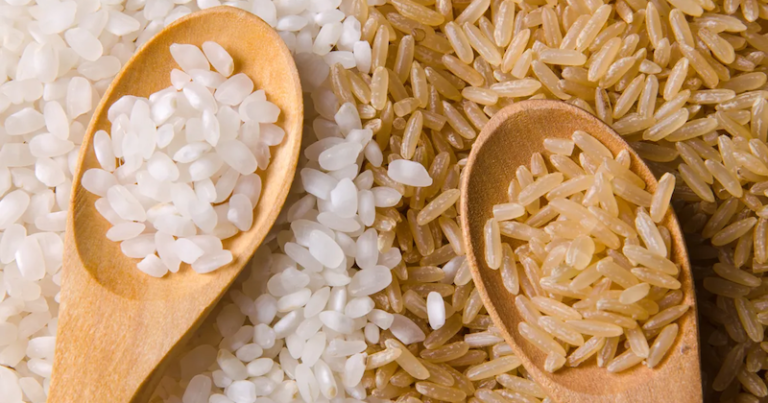
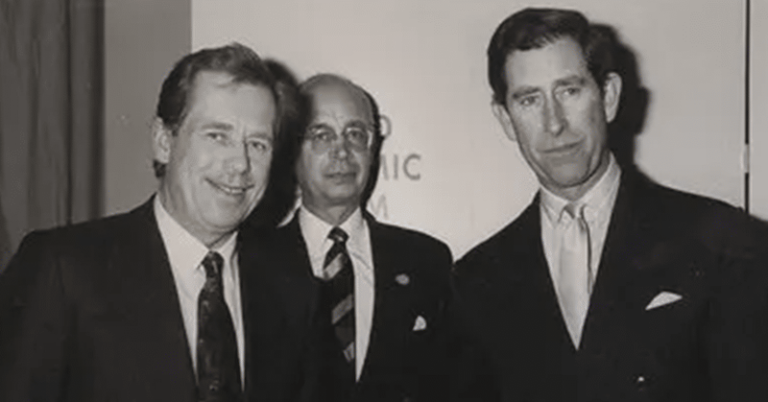
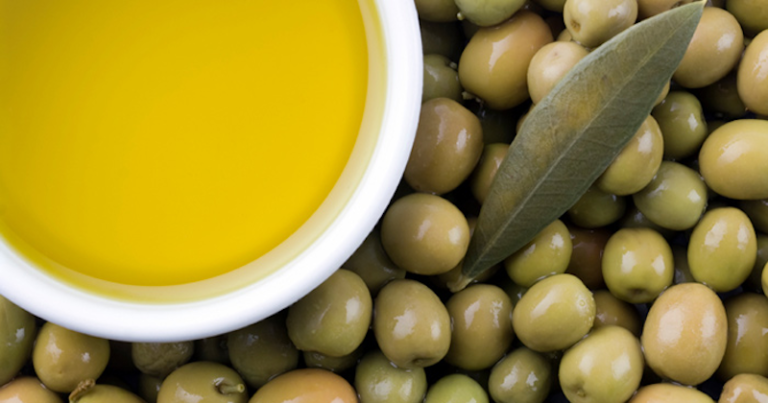

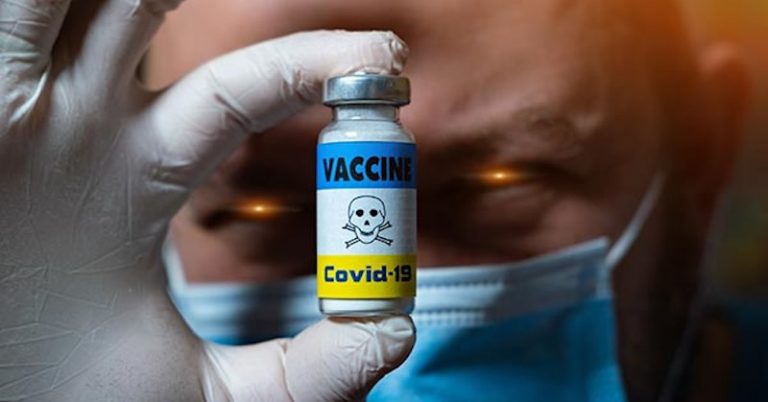
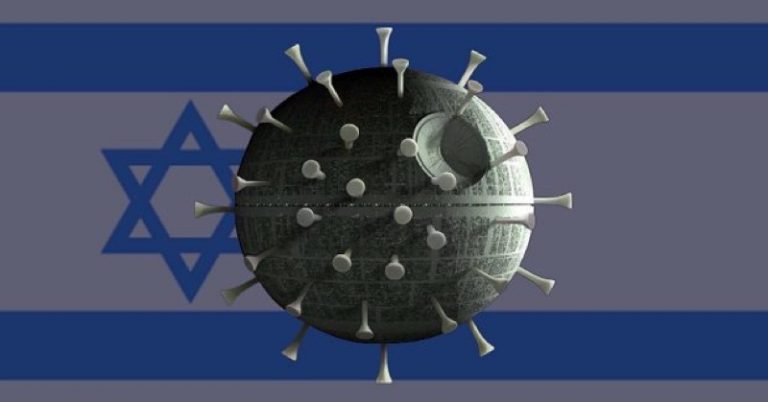



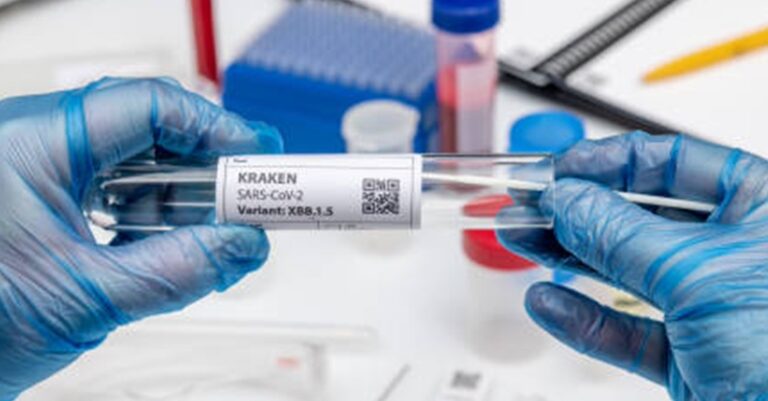

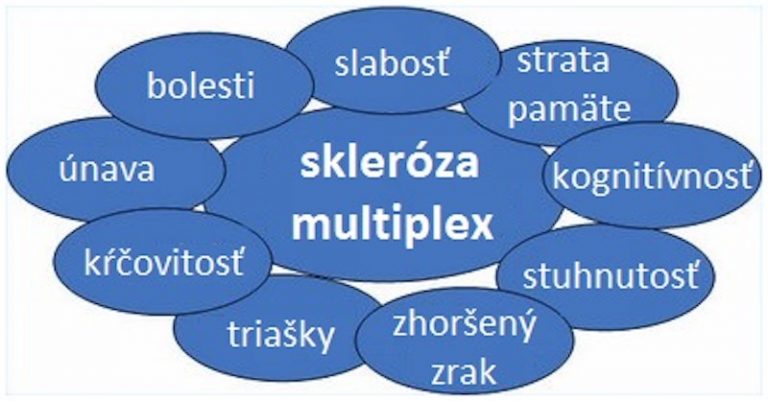

















drzte sa nas ako kliesta, mozeme vam pomoct vyliecit cukrovku. [email protected]
Mohol by som poprosit blizsie info ?
Aj ja by som poprosila viac info..